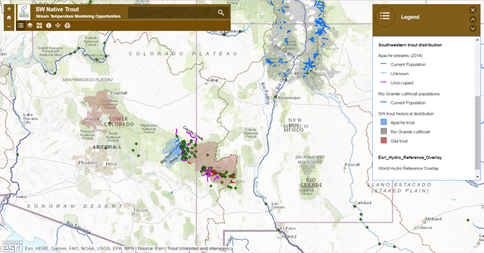Trout prefer cold water, often less than 65°F, and stream temperature has a strong influence on their well-being. TU restoration projects often target improving stream temperatures, and keeping a record of temperature variability and trends can be an important tool to help confirm the success of these efforts or identify where further work is needed. Waterproof data logging thermometers offer a simple, affordable means to fill this need.
There are several resources available to help get you started with stream temperature monitoring:
A gentle introduction
- TU Stream temperature monitoring handbook
- US Forest Service Simple Temperature Logger Installation Guide
More detailed protocols
- US Forest Service Stream Temperature Monitoring User Guide
- EPA Best Practices for Continuous Monitoring of Temperature
Other web-based resources
TU web-based mapping tools
Provide reference information – particularly trout and salmon distribution and existing monitoring locations – to help plan where to monitor:
- TU’s West-wide Temperature Monitoring Application
- TU’s Southwest Native Trout Temperature Monitoring
- TU’s Brook Trout Stream Temperature Monitoring Application
Existing monitoring locations compiled by federal agencies
- US Forest Service Nationwide Interagency Current Monitoring Network
- US Forest Service NorWeST Modeled Stream Temperature Scenarios
- USGS NorEaST Stream Temperature Monitoring Network



